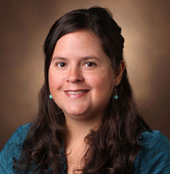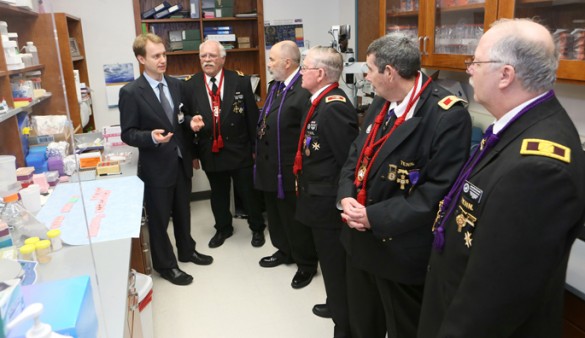Two Vanderbilt Eye Institute physicians have been selected as Emerging Vision Scientists by the Alliance for Eye and Vision Research (AEVR).

Anthony Daniels, M.D., assistant professor of Ophthalmology and Visual Sciences, Cancer Biology and Radiation Oncology, and Dolly Ann Padovani-Claudio, M.D., Ph.D., assistant professor of Pediatric Ophthalmology and Adult Strabismus, were among 22 vision scientists recognized and invited to participate in a congressional briefing in September as well as represent the vision science community with visits to various congressional offices.
Daniels’ research focuses on developing novel therapies for the treatment of retinoblastoma, the most common ocular cancer in children. His team uses an emerging therapeutic approach called intra-arterial chemotherapy, or IA chemo, to deliver chemotherapy directly to the tumor in the eye. This approach limits the adverse effects typically associated with systemic chemotherapy.
His research aims to develop novel compounds that are more effective and less toxic than the traditional agents currently available.

“Not only are we targeting the tumor to try to spare the rest of the child’s body from the toxic effects of chemotherapy, but we are also working on targeting the molecular machinery of the cancer cells themselves in order to spare the normal functional tissues in the eye,” Daniels said.
“This approach allows us to not only save the child’s life without having to remove his or her eyes, but vision can often be preserved as well.”
Padovani-Claudio’s work is focused on finding new treatments for diabetic retinopathy and retinopathy of prematurity (ROP), which are leading causes of vision loss and blindness in adults and children. Her research centers on inflammation and vascular growth in the retina.
“Patients with these conditions require life-long vision services, can face challenges with education and employment, and can have decreased quality of life, depression and increased mortality,” she said. “These diseases represent an immense burden to our society.”
Padovani-Claudio said that advances in neonatal care, allowing for higher survival rates in premature infants, and the growing incidence of obesity and diabetes in the pediatric population will result in an increase in complications associated with these retinal diseases.
Participating in the AEVR program will create an additional venue to share research and ideas with other scientists and, more importantly, educate members of Congress, she said.
“I will be able to raise awareness about the importance of funding vision research in general and of funding early stage investigators to better understand and attempt to improve therapies for these and other blinding conditions.”
The AEVR, a nonprofit educational foundation, was founded in 1993 to advocate for increased federal funding for eye and vision research.















